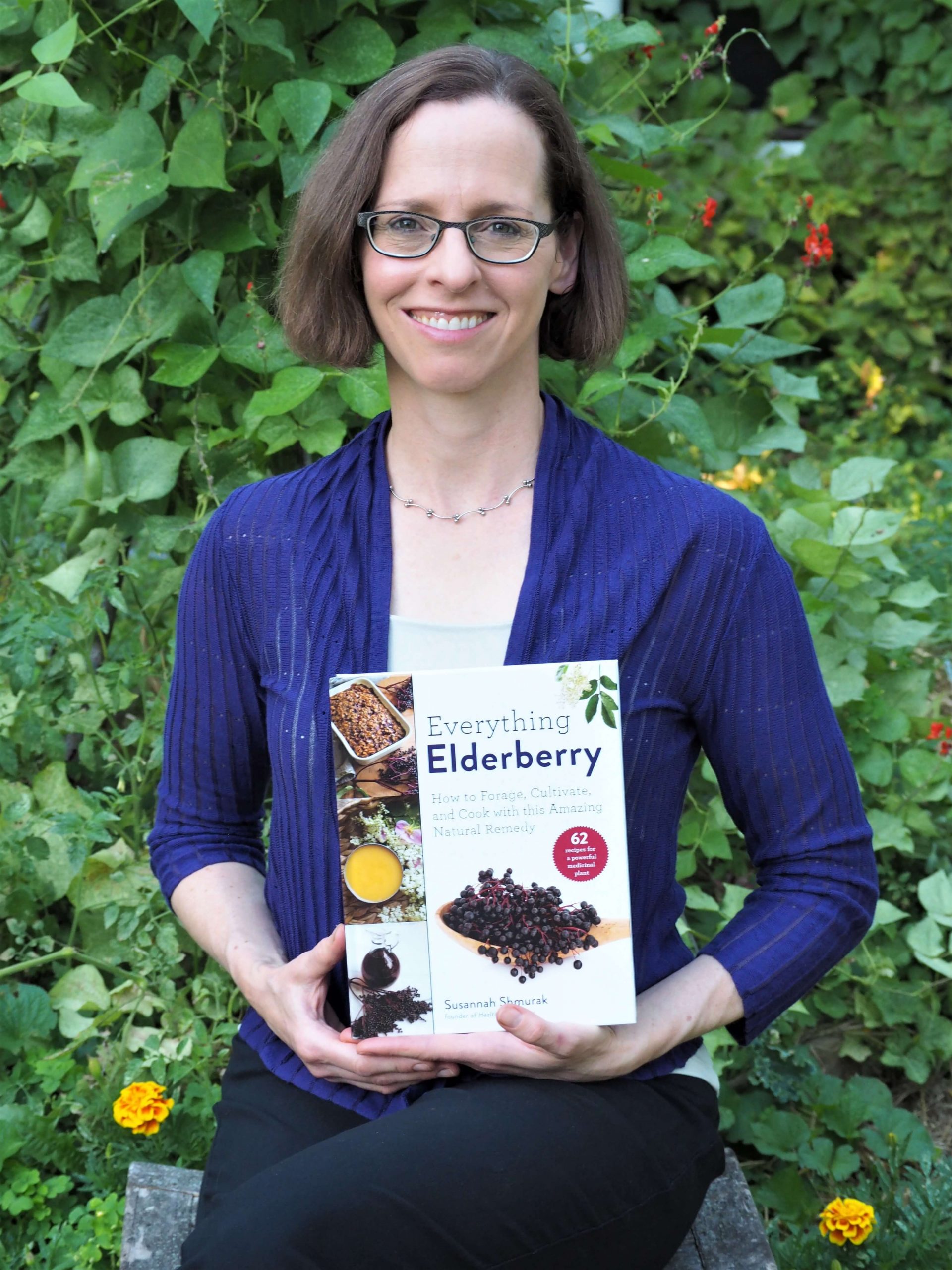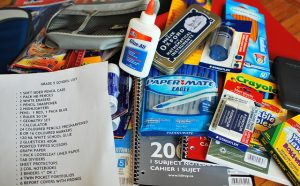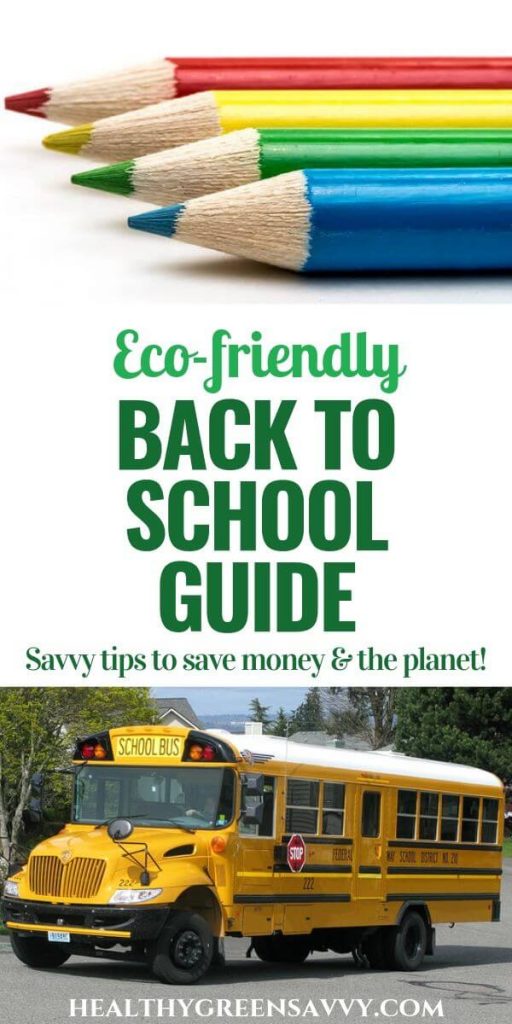Last Updated on January 12, 2023
It’s back to school time! As you’re getting kids geared up for another school year, this green back to school supplies guide will help you make the healthiest choices for your family and the planet.
Wow, has this summer flown by! Somehow it’s already time to be gathering school supplies and getting ready for another school year. Where did the time go?
Whether you’re an old hand at back to school or just sending your eldest child to school for the first time, getting together what you need for a greener, healthier back to school takes a bit of research. When my eldest started kindergarten last year, I was blown away by all the new ways she could be exposed to chemicals that might harm her health.
I spent weeks investigating the most affordable, user-friendly, non-toxic options for her lunch, school supply list and other gear. I hope to save you some time, frustration, and money by sharing what I found.
Avoiding toxics takes some effort, and to be honest, in our heavily polluted world there’s no escaping them completely. From PVC in their backpacks to cadmium in costume jewelry and BPS in applesauce, an eco-aware parent has plenty to worry about.
The good news: It’s getting easier to avoid these things as more companies step up their sustainability game. You can find nontoxic lunch gear more easily than ever, and if you’re packing a whole-foods lunch you’re likely greatly reducing your child’s exposure.
What they’ll breathe in at their school is another issue. Read more about making your school healthier for all children at the end of the post.
My aim is always to make things easier for everyone else, so we don’t all have to devote weeks of our lives to researching the complicated world of non toxic kids’ gear. Here’s what you need to know to have a more eco-friendly back to school this year.
Green Back to School Strategy #1: Don’t Fall into the “All-New” Trap
If your kids’ shoes, clothes, and other gear are in good shape, don’t feel you have to buy all new stuff just because the calendar says September. And if you do need a new pair of shoes, check out some of the terrific “gently used” options at your local thrift store or reuse shop.
I regularly score almost-new sneakers for $3 or less at our local resale shop, and all the proceeds support local charities. There are some great online shops for secondhand clothing as well. Check out Schoola, which raises money for schools with its clothing sales, Swap.com, or LilJellyBeans.
Consider hosting a clothing swap with other families you know. A mix of ages will ensure that the outgrown gear of one kid can go to another, smaller child. Then sock away all the money you’ve saved on clothes into a college fund. Though your fourth grader might balk at not having the latest shoe fashions, she’ll thank you when she graduates from college without huge student debt.
Green Back to School Strategy #2: Find Greener School Supplies
Remember those other 4 Rs as you prep for back to school: Reduce, Reuse, Recycle, Rethink. Start by evaluating what you actually need. If you have enough pencils and pens lying around the house, fill the pencil case with those. See what binders and notebooks can last another semester. You’ll save money and lessen your environmental impact.
What you do buy new, look for post-consumer recycled content and FSC certification. Even the big office supply chains now carry a decent number of “greener” options.
Kids’ stuff these days is riddled with PVC, a compound that can include phthalates, which are banned from baby toys because of their toxicity. But it’s in your kids’ binders, folders, backpacks, lunch boxes, and schools. All those shiny cartoon characters your kids want on their sneakers and backpacks? Sadly, they’re likely made with PVC.
The Center for Health and Environmental Justice has done some great research and advocacy on this issue. Read their informative report and then check out the list they’ve compiled of PVC-free school supplies.
Don’t believe that greener choices have to cost more, though some might. Our school supply list included things like tissues and paper towels, and I found recycled-content versions at my coop for less than the conventional brands using virgin paper available at a nearby big box store!
If you do have to shell out a little more for the “greener” notebook or lunch box, remember you saved a lot on clothes by swapping and buying secondhand, so you still come out ahead.
Crocodile Creek is one company that makes affordable, sturdy, adorable AND PVC-free backpacks and lunch boxes.
Green Back to School Strategy #3: Pack a No-Waste Lunch
Did you know that American public schools send millions of pounds of lunch waste to the landfill every year? The EPA estimates the average student tosses 67 pounds of lunch garbage annually, more than many elementary school kids weigh! Learn to pack your student a zero waste lunch and help change this scary stat.
Bonus: Reusable everything means big savings on disposables. A sturdy metal lunch box and water bottle will last for years and keep huge amounts of plastic out of the waste stream (and away from your child’s food). You don’t need plastic baggies, juice boxes, and snack-size packages when you outfit yourself with some of this great gear! Here’s a complete guide to getting started with zero waste living.
Mama Instincts reviews some useful gear that can help you make school lunches a bit greener. I just love the stainless steel lunchboxes by ECOlunchbox and Lunchbots. They’re easy to pack, open, and clean. Ours show no signs of wear after a year of hard use by a not-tremendously-careful kindergartener.
I also use our Squeasy refillable pouches almost daily for homemade smoothies, yogurt, and applesauce. They’re made of silicone rather than plastic and are the easiest to fill and clean of all the reusable pouches I tried. So much better for the planet and your kids than those one-use squeezers clogging up our landfills! Plus, over the long haul, you’ll save a lot of money if you’ve been buying single-use pouches.
Remember to keep in mind how much sugar is packed in that lunch, even in the guise of “healthy” foods, like yogurt, juice, and granola bars. (The packaging waste is another reason to avoid these less healthy lunch options.)
According to the latest guidelines, we should all limit our sugar intake to no more than 10% of our total calories. For a school age child, this would mean an upper limit of around 150 calories from sugar, or around 38 grams, what’s in one 12 oz can of soda. Many kids will take in that much sugar by the time’s breakfast’s over!
When you’re tallying it all up, be sure to include all sweeteners, from the juice concentrate in fruit chews to the honey, maple syrup, and dates you use to sweeten homemade treats.
Even seemingly healthy granola bars and fruit-flavored yogurt are sources of added sugar. Granola bars can have upwards of 10 grams of added sugar, as can flavored yogurts. Try unsweetened yogurt with fresh fruit, and save the sugar budget for actual treats, not sweetened versions of what could be healthy food.
Check out some of these inspiring ideas for healthy lunches from Raising Generation Nourished!
Green Back to School Strategy #4: Help Make Your School More Eco-Friendly
More and more schools are jumping on the composting bandwagon and slashing the amount of waste they produce — hooray! If yours doesn’t compost yet, consider starting a program.
Remember that all that food waste heading to landfills produces methane when it breaks down, a greenhouse gas far more potent than CO2. By turning food waste into compost, your school is helping protect your child’s future.
All that traveling from school and extracurriculars can add up to some serious mileage over the course of the year. Do as you much as you can on foot and by bike to reduce the carbon footprint of your travels, and get the most fuel efficient car possible.
When you do drive, be sure to turn off your car in the pickup lane. (Check out this informative post on idling your car from Small Footprint Family for more on why we should always turn the car off when we can.)
The Green Schools Initiative has terrific resources for making your school more sustainable and less toxic. Check them out and see what you can do to make your school healthier and greener. I also love the resources at and idea behind Ecoliteracy.org. Check them out and get together with some parents to begin greening your child’s school.
How have you tried to make back-to-school a little greener over the years? Please share some of your good ideas in the comments!
Pin to save this greener back to school guide!
Photo credits: William Warby, Chris, Morgan, U.S. Department of Education (via Flickr); Crocodile Creek, Lunchbots

Susannah is a proud garden geek and energy nerd who loves healthy food and natural remedies. Her work has appeared in Mother Earth Living, Ensia, Northern Gardener, Sierra, and on numerous websites. Her first book, Everything Elderberry, released in September 2020 and has been a #1 new release in holistic medicine, naturopathy, herb gardening, and other categories. Find out more and grab your copy here.










 Hi, I'm Susannah, a garden geek, energy nerd, and fan of healthy food and natural remedies. Need some simple, practical solutions for living healthier and greener? You've come to the right place! More about me and my green projects
Hi, I'm Susannah, a garden geek, energy nerd, and fan of healthy food and natural remedies. Need some simple, practical solutions for living healthier and greener? You've come to the right place! More about me and my green projects